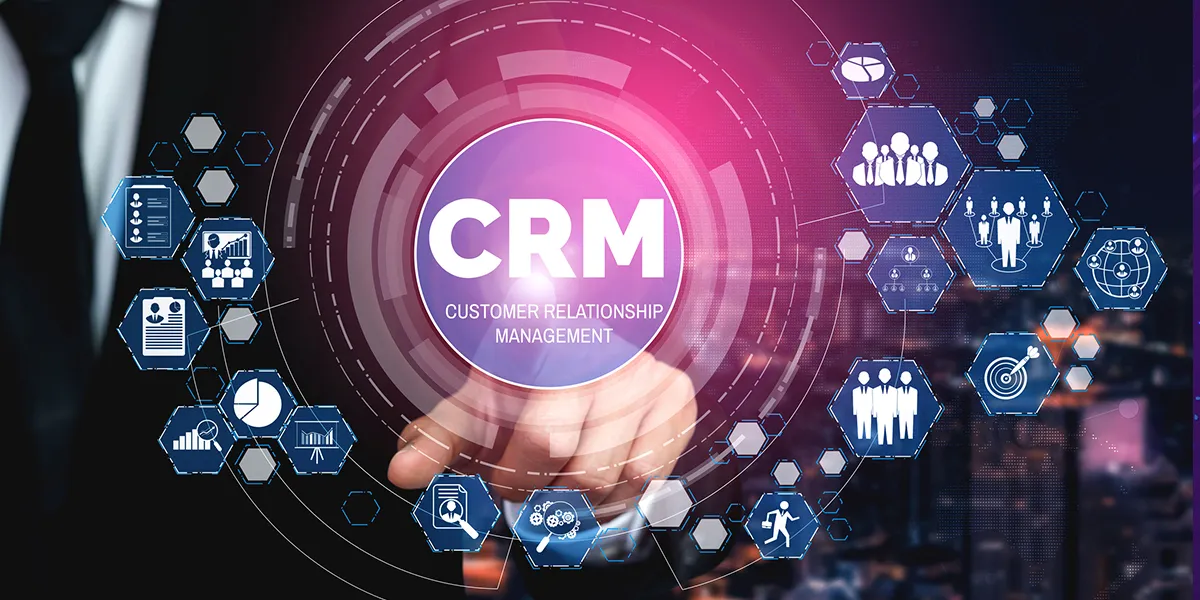CRM lead lifecycle management is a structured process that tracks and manages potential customers from the moment they enter the sales funnel until they become loyal clients. It ensures every lead receives the right communication, nurturing, and follow-up at each stage of their journey. Modern businesses rely on CRM lead lifecycle management to automate processes, improve lead visibility, and align sales and marketing teams. By integrating CRM systems, organizations can monitor lead sources, measure engagement, and optimize conversion rates. Effective CRM lead lifecycle management helps businesses enhance productivity, reduce lead leakage, and maximize the return on their marketing investments.
The Importance of CRM Lead Lifecycle Management
For any business that depends on consistent customer acquisition, Lead Journey Management plays a critical role in maintaining control over every stage of lead interaction. Without a structured approach, leads can easily slip through the cracks, resulting in missed opportunities. In the middle of effective sales operations, CRM lead lifecycle management ensures that each prospect receives timely attention and moves smoothly from awareness to purchase. It bridges the gap between marketing and sales, ensuring both departments work together toward a common goal—turning potential leads into loyal customers while maintaining efficient tracking and communication processes.
Key Stages of CRM Lead Lifecycle Management
The success of CRM lead lifecycle management depends on understanding its various stages. These typically include lead generation, qualification, nurturing, conversion, and retention. Each stage requires specific strategies and tools to move leads forward effectively. During lead generation, businesses focus on capturing interest, while the qualification stage filters out unqualified leads. Nurturing then builds trust through personalized engagement, leading to conversion. Finally, retention strategies ensure continued loyalty. In the middle of these processes, CRM lead lifecycle management helps organize and monitor each stage to maintain consistency, allowing businesses to achieve sustainable growth through data-driven strategies and targeted communication.
Lead Generation and Capture in CRM Systems
The initial step in CRM lead lifecycle management involves generating and capturing leads from multiple sources. These may include websites, social media, email campaigns, or paid advertisements. A CRM system consolidates all these leads into one centralized database, enabling quick access and follow-up. Capturing accurate data is crucial because it ensures that each lead is properly identified and segmented for future marketing efforts. In the middle of this stage, Lead Journey Management automates data collection, reducing manual entry errors and ensuring no potential customer is overlooked, ultimately strengthening the efficiency and reliability of the lead acquisition process.
Lead Qualification and Scoring Techniques
Once leads are captured, businesses must evaluate their potential value through lead qualification and scoring. Lead Journey Management systems assign scores based on predefined criteria such as engagement level, demographic details, and purchasing intent. This scoring helps prioritize leads that are most likely to convert, allowing sales teams to focus their efforts efficiently. In the middle of sales strategies, CRM lead lifecycle management ensures that qualified leads receive immediate attention while less promising ones are nurtured further. This strategic filtering not only saves time but also increases conversion rates by focusing resources on high-potential opportunities, resulting in improved sales productivity.
Nurturing Leads through CRM Automation

Nurturing is one of the most critical stages of CRM lead lifecycle management because it builds relationships and trust with prospects. CRM systems automate nurturing activities such as personalized emails, follow-ups, and targeted offers to keep leads engaged. For instance, if a potential customer downloads an eBook, the CRM can automatically trigger a series of follow-up messages based on that action. In the middle of this process, CRM lead lifecycle management ensures that communication remains relevant and timely. By delivering the right content at the right time, businesses can increase engagement, strengthen brand loyalty, and move leads closer to conversion effortlessly.
Conversion Strategies in CRM Lead Lifecycle Management
Conversion is where all the nurturing and engagement efforts pay off. In CRM lead lifecycle management, conversion refers to turning a qualified lead into a paying customer. Effective CRM systems help track every touchpoint, making it easier for sales teams to know when a lead is ready to make a purchase. Automated reminders, proposal templates, and contract management tools streamline this stage, ensuring a smooth transition. In the middle of the conversion process, Lead Journey Management enables clear visibility into sales pipelines and eliminates communication delays. By providing actionable insights, it increases closure rates and enhances overall sales performance significantly.
Customer Retention and Relationship Building
The journey doesn’t end with conversion; maintaining relationships is equally important. Lead Journey Management extends beyond sales by helping businesses retain customers and encourage repeat purchases. CRM tools track purchase history, communication logs, and feedback to create personalized loyalty programs and post-sale support strategies. In the middle of retention efforts, CRM lead lifecycle management allows businesses to identify at-risk customers and engage them proactively. This ongoing relationship-building fosters trust, enhances satisfaction, and increases lifetime customer value. A well-implemented retention strategy ensures that clients remain loyal advocates for the brand, fueling sustainable long-term growth.
The Role of Data and Analytics in CRM Lead Lifecycle Management
Data and analytics form the backbone of Lead Journey Management. Businesses rely on real-time reports and dashboards to measure performance at each lifecycle stage. Metrics such as conversion rates, engagement frequency, and customer acquisition costs provide actionable insights. By analyzing these trends, companies can identify bottlenecks and optimize processes. In the middle of business intelligence efforts, Lead Journey Management uses predictive analytics to forecast future opportunities and risks. This data-driven approach empowers decision-makers to allocate resources effectively, refine marketing strategies, and continuously improve customer acquisition and retention outcomes.
Integrating Sales and Marketing through CRM Lead Lifecycle Management
One of the greatest strengths of Lead Journey Management lies in its ability to align sales and marketing teams. Misalignment between these departments often results in inefficient lead handling and inconsistent communication. A unified CRM system ensures that marketing-qualified leads are seamlessly transferred to sales with complete data transparency. In the middle of team collaboration, Lead Journey Management fosters accountability by providing a shared platform for tracking lead progress and performance metrics. This integration not only improves lead quality but also enhances cross-departmental communication, ensuring a cohesive and effective customer journey from awareness to purchase.
Benefits and Future of CRM Lead Lifecycle Management
The future of Lead Journey Management looks promising with the integration of artificial intelligence, automation, and advanced analytics. These technologies are revolutionizing how businesses manage leads by providing predictive insights, intelligent automation, and real-time personalization. In the middle of digital transformation, Lead Journey Management enables businesses to scale faster, improve efficiency, and deliver exceptional customer experiences. Its benefits include better conversion rates, higher customer satisfaction, and streamlined operations. As the business landscape continues to evolve, organizations that invest in optimizing their CRM processes will remain competitive and future-ready in the global marketplace.
Conclusion
In conclusion, Lead Journey Management is an indispensable framework for managing leads from initial contact through long-term engagement. By integrating automation, analytics, and team collaboration, businesses can ensure every lead is handled strategically and efficiently. It minimizes human error, accelerates sales cycles, and strengthens customer relationships. Lead Journey Management also bridges the gap between marketing and sales, creating a unified workflow that enhances overall productivity. As technology continues to advance, businesses that refine their lead lifecycle strategies will achieve greater visibility, improved conversions, and lasting success in customer relationship management.
